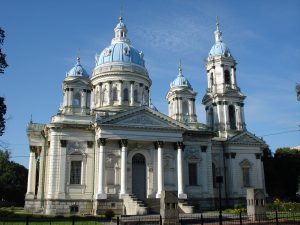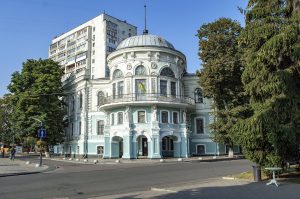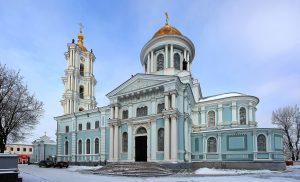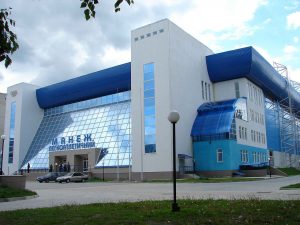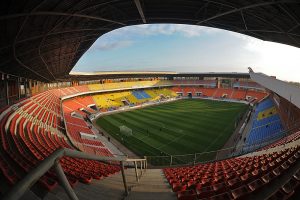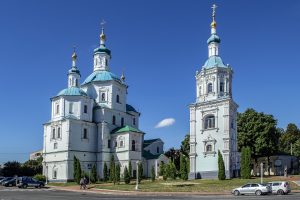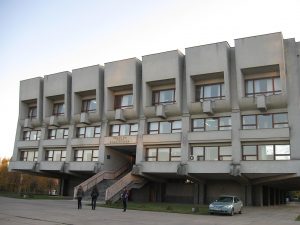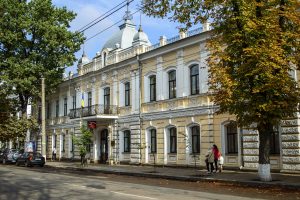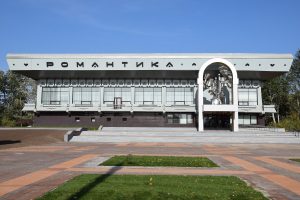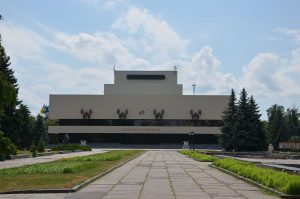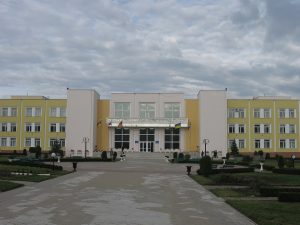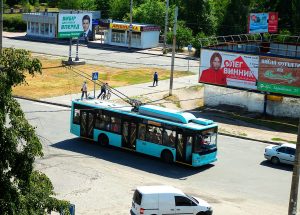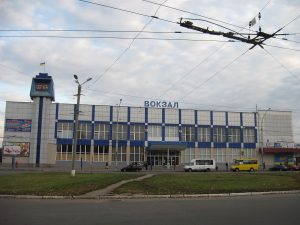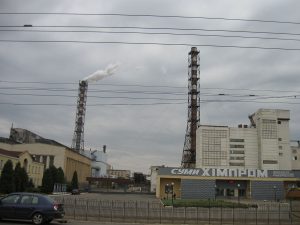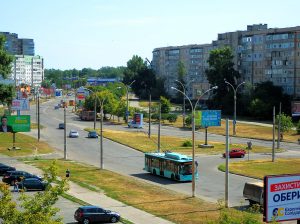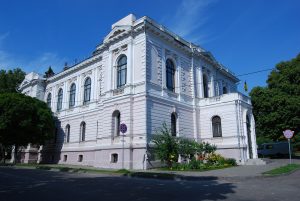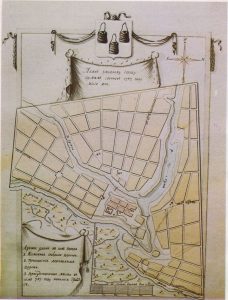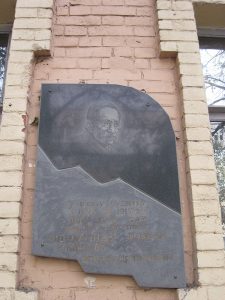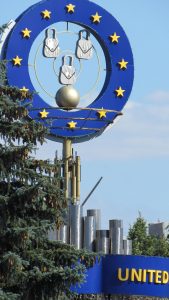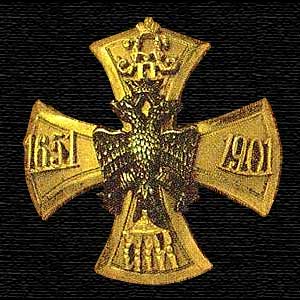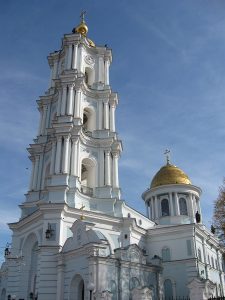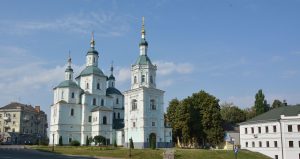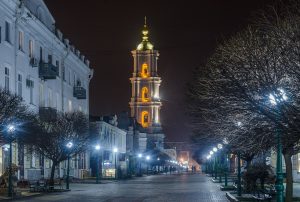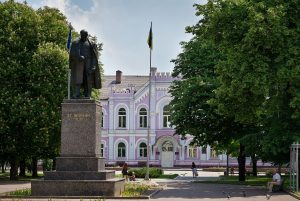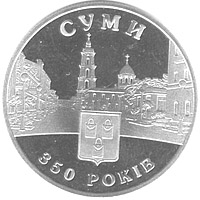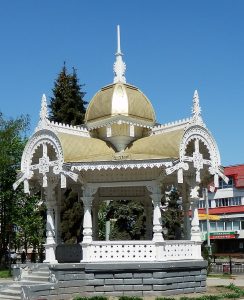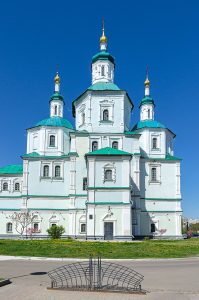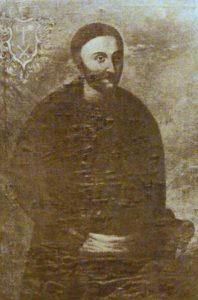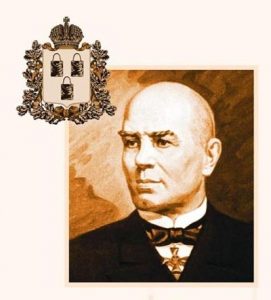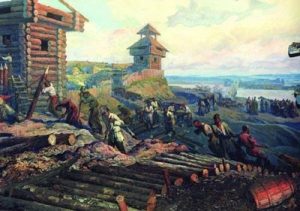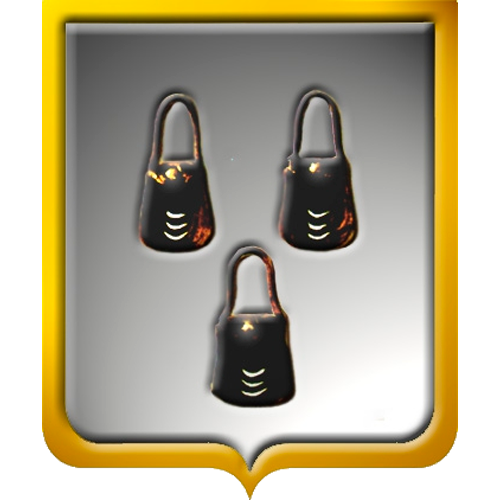 The history of any city is inseparable from the history of the country. The foundation of Sumy is connected with the events of the liberation war led by Bohdan Khmelnytsky in 1648-1654. Different sources give different dates of foundation of the city – 1651, 1652, 1653, 1655. The most likely of them is the last. It was in 1655 that the settlers from Kyiv region came to the place of the present Sumy, headed by ataman G. Kondratiev. Fortifications were erected, and in 1658 the Sumy Slobodsky Cossack Regiment was formed, headed by G. Kondratiev.
The history of any city is inseparable from the history of the country. The foundation of Sumy is connected with the events of the liberation war led by Bohdan Khmelnytsky in 1648-1654. Different sources give different dates of foundation of the city – 1651, 1652, 1653, 1655. The most likely of them is the last. It was in 1655 that the settlers from Kyiv region came to the place of the present Sumy, headed by ataman G. Kondratiev. Fortifications were erected, and in 1658 the Sumy Slobodsky Cossack Regiment was formed, headed by G. Kondratiev.
The history of the Kondratiev family – a kind of courageous warriors and generous benefactors – is part of the history of the city. For example, Gerasim Kondratiev’s son Andriy participated in the Crimean campaign and the Northern War, since 1706 he headed the Sumy Slobodsky regiment and at the same time built temples. The first stone structure in the city – the Resurrection Church – was built with his assistance. Continuing the glorious traditions of the family, in the second half of the nineteenth century, Nikolai Kondratiev, a friend of the great Russian composer P. Tchaikovsky, was the first guardian of the Sumy Alexander Progymnasium, built a church with it at his own expense. And the city was presented with a plot of land with a large house, which housed the city council, the district court and one of the fire brigades. Subsequently, the building of the Public Assembly (now the regional philharmonic society) was built nearby, where opera performances of professional and amateur troupes, concerts of outstanding instrumental musicians and vocalists were held. Every Sumy resident gratefully remembers the Kondratievs – those who founded, defended and decorated the city.
The course of life of Sumy at the beginning of the eighteenth century was changed by the events of the Northern War. From December 26, 1708 to February 3, 1709, Peter I stayed in the city together with his pond. It was in Sumy that he signed a number of manifestos and decrees, held a military meeting, the decisions of which radically influenced the further course of the war. According to legend, the inhabitants of the city, by order of Peter I, “solemnly and magnificently” met the New Year – 1709 – year.
Peace on earth is the key to the prosperity of the city. Since the 1710s, industry and trade have been developing in Sumy. There were enterprises of manufactory type, every year two “large” fairs were organized, which lasted 20-30 days, and two “medium” ones – 5-7 days each. At the beginning of the 80s, there were more than 400 artisans of different profession, and in the 90s there were already more than 700. The population of the city also grew. If in 1732 it was 7700 people, in 1773 – 9845.
The city was also growing. In the second half of the eighteenth century, a geodetic survey was carried out and several plans were drawn up. Any plan is a kind of portrait of the city, sometimes somewhat idealized. The master plan, approved in 1786, provided for the development of Sumy with a rectangular network of streets and quarters. It was at this time that several houses were built according to the projects of famous architects O. Palitsyn and P. Yaroslavsky – a talented student of the great V. Bazhenov. According to Yaroslavsky’s projects, the Intercession Church (1783-1790) and a one-story stone house of “present places” were erected.
In the second half of xviii century the “state transformations” of Catherine II affected the life of Sumy. Thus, in connection with the liquidation of the Cossack self-government by the government, the Sumy Cossack Regiment was reorganized into a regular part of the Russian army, and the city from the regimental center turned first into a provincial one, and from 1775 – into the county town of Slobodsko-Ukrainian province, renamed in 1835 to Kharkiv.
The nineteenth century for Sumy was an era of renewal and prosperity. After a fire in 1839-1840. the city changed its face – according to the master plan of 1845, and the heyday of Sumy as an industrial and cultural center in the second half of the NINETEENth century is associated with the entrepreneurial and social activities of I. G. Kharitonenko (1822-1891) – the founder of the famous dynasty of sugar factories. foundry “Vulkan” (1893), “Sumy machine-building workshops” (1896), the last of which is now one of the giants of modern industry of Ukraine – OJSC “Sumy NGO them. M. V. Frunze.”
The turbulent events of the twentieth century did not bypass the city above the Psl. The fateful events – the revolution of 1905-1907, the First World War, the events of October 1917 and the civil war – echoed in the provincial Sumy. Stabilization of life began only in the 1920s. In the years 1923-1924. metalworking and machine-building plants started working. The cultural and artistic life of the city was revived: the historical and art museum was opened (headed by N. Onatsky), the Palace of the Proletkult, the workers’ and peasants’ theater began to operate. On the basis of pedagogical courses, a pedagogical technical school is first created, and later – an institute of social education.
A new period in the history of the city began with the formation in 1939 of the Sumy region. The city became a regional center – the center of cultural, artistic and economic life of the whole region of Ukraine.
During the Great Patriotic War, an underground organization “Flag” headed by D. Kosarenko operated in the city occupied by the fascists. Sumy was liberated on September 2, 1943 by units of the 167th, 232nd and 340th infantry divisions of the 50th Infantry Corps of the Red Army, in this regard they were given the honorary name of Sumy-Kiev.
If the second half of the 1940s – 1950s in the history of Sumy, as well as the whole country, were years of reconstruction, the 1970s were the years of transformation of the city into a powerful industrial and cultural center. The city grew and was renewed. Its architectural face was distinguished by originality among other regional centers of Ukraine. In the then Soviet Union, the products of such giants of industrial production as the Tsentrolit and Electron factories, the production associations of SMNVO them were well known. Frunze, “Khimprom”, “Nasosenergomash”, “Sumyzalizobeton”.
Ukraine’s independence affected all spheres of life of Sumy. At the turn of the millennium, Sumy residents remembered the great historical heritage of the city. In 1997, the monument to I. Kharitonenko, destroyed in 1918 by the famous Russian sculptor A. Opekushin, was restored. Over the past five years, work has been carried out on the restoration of the central part of Sumy. The city is also decorated with new buildings, among which the most prominent are the Jubilee Stadium and the athletics arena that meet all international standards. So it is not for nothing that Sumy is called the pearl of the Slobozhansky region.
